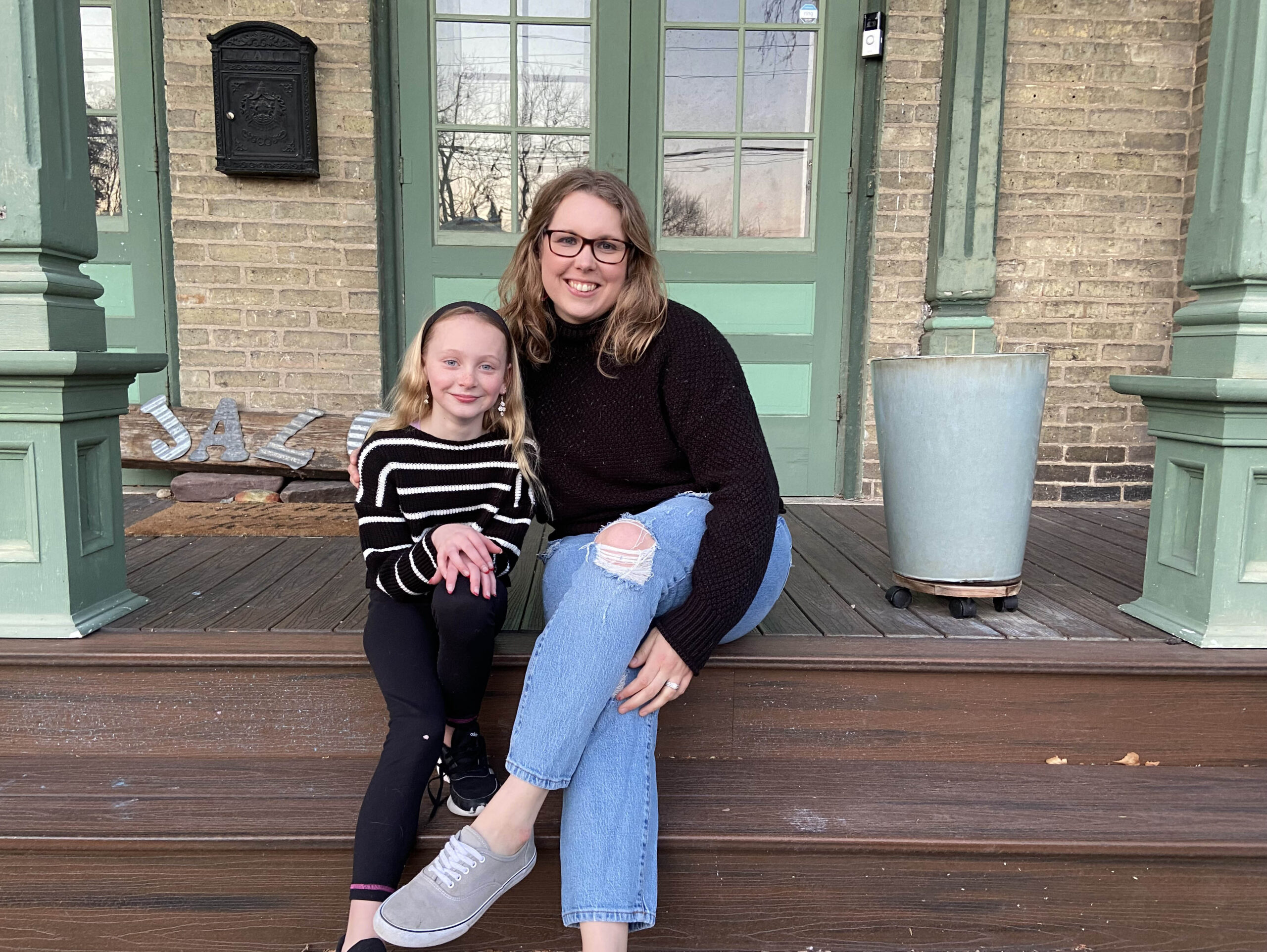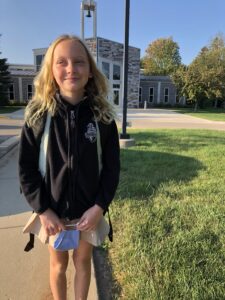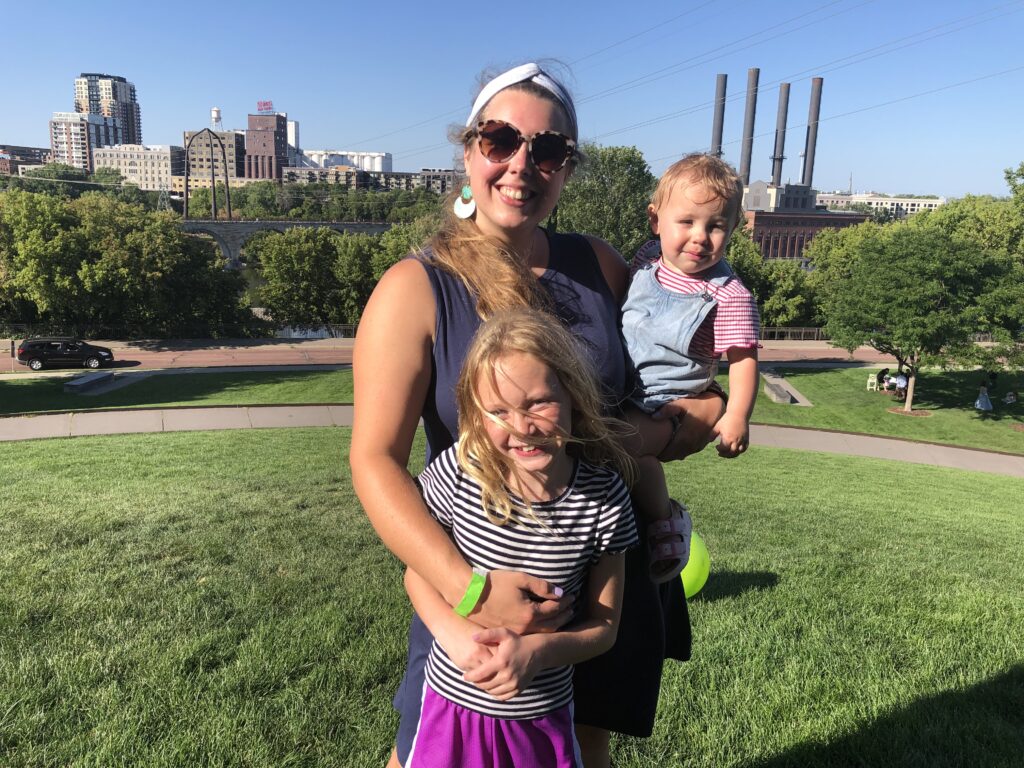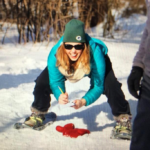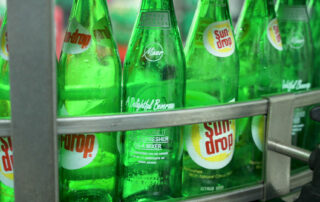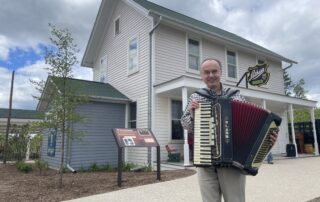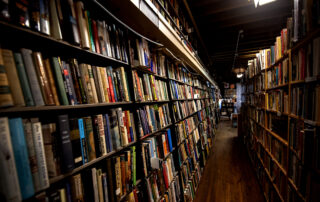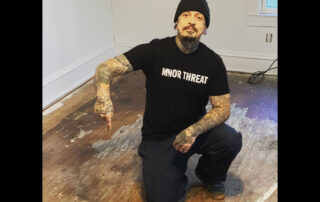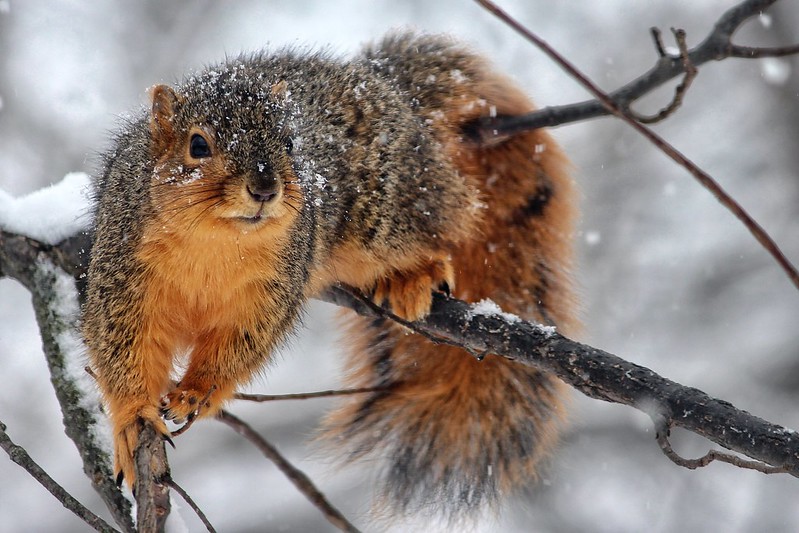The pandemic is having a big impact on all of us, including kids. Take it from Cora Grube, an 11-year-old who’s in 5th grade and has a lot to say about how children are faring.
Cora really wants to do her part to help keep her family, her community and the world safe from COVID-19. Throughout the pandemic, Cora has risen to the occasion and continued to truly care about the people around her. Her questions have been respectful, her awareness acute and her sympathy great.
She talked with me, her stepmom, about what it’s like to be a kid in the pandemic, how it has changed things for them and how they have risen to the challenge.
This conversation has been edited for brevity and clarity.
Andrea Anderson: So, Cora, we’re here to talk about what it’s like to be a kid in the pandemic and how the pandemic has changed things for children and teenagers. But let’s go back to before the pandemic, OK? What were your favorite things to do before the coronavirus?
Cora Grube: Well, I could hang out with my friends more often. And like after school, I could go over to their house without having to worry about the pandemic. My favorite things to do now are probably still seeing my friends or doing my nails, which I really like doing – it’s something to occupy me.
AA: What is something you want people to know about how the pandemic has changed the lives of children?
CG: Well, the main thing is not being able to see friends and family, and also during remote learning we can’t see other people as much. We really just have to stick to our family because we don’t want to get anybody sick or actually pass on COVID-19.
AA: And what does that mean for kids? What does that do to them not being able to see those people?
CG: It makes them pretty sad because if they can’t hang out with their friends, they’re pretty lonely.
AA: Let’s talk about school. How has school changed or even stayed the same during the pandemic?
CG: The thing that’s definitely changed is having to wear masks and the learning. When we learn(ed) remotely, it affected some kids’ learning. But in person, it’s a bit better for us to learn because over remote learning sometimes it like glitches out. And then you can’t hear people very well. But something that stayed the same is like our schedule, our lunch time.
AA: And so what do you and your classmates and your friends, what do you feel about the pandemic?
CG: Well, it’s not really good. So me and my friends aren’t really happy with it, but I feel like maybe it’s gotten me and my best friend closer because she joined the school, I think, when the pandemic was about to hit or when it already hit. So I really like the part where I met my best friend.
AA: How do you think kids are feeling now, two years into the pandemic versus a year ago when we thought that it would be over soon?
CG: Well, now I think they’re still really upset at the pandemic and why isn’t it going away? But for the one year, I guess they were just like, ‘Oh, it’s OK. It’s only a year of our lives, it’s fine.’ But now that it’s two years, we don’t know when it’s going to stop, but we hopefully think that it’s going to stop very, very soon.
AA: For you, Cora, how have things changed from before the pandemic to right at the beginning and to now?
CG: At the beginning, it was really tough because I didn’t know what was happening and I was pretty scared. In the middle, I started to get used to it, and now I just think it’s normal right now. But I know it’s not normal, like this doesn’t really happen in the world very much.
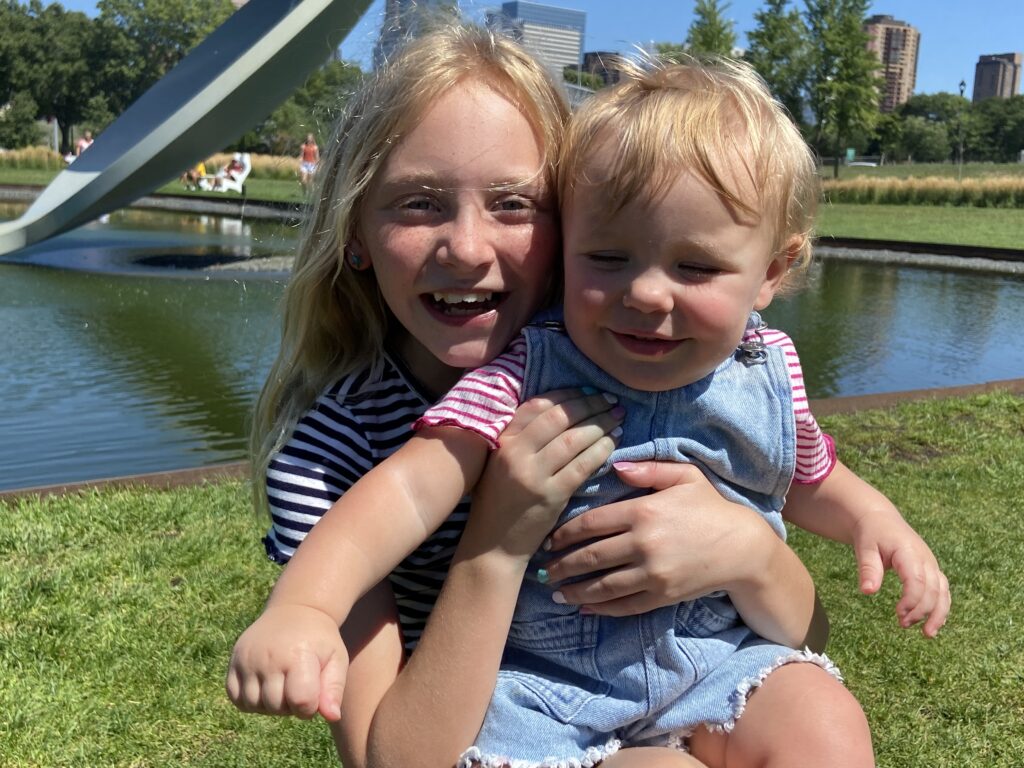
Cora Grube holds her sister Magnolia Grube at the Minneapolis Sculpture Garden in August 2021 in Minneapolis, Minnesota. Photo courtesy of Joshua Grube
AA: So we’re going to turn to a subject that is a little bit polarizing in our environment right now, and that is masks. And I want to ask you: Do you wear a mask? And if you do or don’t, why?
CG: I do, because I’m going to try to stop the spread as much as I as an individual can.
AA: What’s it like wearing one during school or at the store?
CG: Well, I got used to it a while ago. But at the beginning it was really, really different because I’m used to just walking in one without remembering a mask and (then) seeing people’s faces differently, like only half of them and stuff like that.
AA: So now we’re going to talk about vaccines, and we talk a lot about the COVID-19 vaccines at home because your younger sister, Magnolia, can’t be vaccinated yet. And we talked a lot about them before you were eligible to get the vaccine and before your older sister, Lucy, was eligible. And we talked about the science behind them.
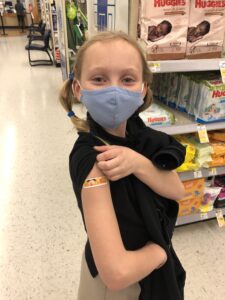
Cora Grube poses for a photo after her second COVID-19 vaccine dose in November 2021. Andrea Anderson/WPR
Did you decide to get vaccinated? And why did you make that decision, Cora?
CG: I did get vaccinated because I really want to try to help out the world without getting anybody sick. And also especially because we have Magnolia at home, and I really do not want her to get sick because she cannot get the vaccine just yet.
AA: Tell us about how hanging out with friends has changed since the beginning of the pandemic to now and how that compares to before the pandemic.
CG: OK, well, this is a really great question because a lot of things have changed. Because like before the pandemic, we used to hang out whenever we wanted. But then it narrowed down when the pandemic hit because I had to pick people to choose in the bubble. And I picked only a few people because I didn’t want to make the whole class sick or anything if I got sick.
AA: And now your bubble is a bit larger than it was?
CG: Yeah, my bubble is larger now because I’m vaccinated and my friends are, too.
AA: And when it comes to hanging out with your family, how does it feel to not be able to go and see your cousins in Madison on a whim? It has to be more planned. How does that make you feel?
CG: Well, it’s not my favorite because if plans get ruined last second, it’s really upsetting. And I bet it is for my cousins, too.
AA: For me, I think I cherish our moments with our family more now than we did before, because they don’t happen as often.
CG: I do agree with that. But one thing I don’t is if it gets changed last minute, then we all get pretty upset, don’t we?
AA: Yes, that’s very true. We all get very sad, and I think we all get a little bit frustrated, too, because we just really want to stay healthy and we want to do our part, but we also want to see our family and our friends, right?
Cora Yeah.
AA: What has been your favorite parts of the pandemic?
CG: Well, my first favorite part is having a baby sister in the pandemic because she is one of the favorite things that I had in my lifetime, and also meeting my best friend Kaitlyn and having a really fun time with me, Kaitlyn and Layla just hanging out at school.
AA: What has been your least favorite part of the pandemic?
CG: Not being able to see family and friends as often as we could.
AA: Is there anything else that you think people should know about the pandemic and teenagers or kids your age or even younger?
CG: Well, I think people should know that me and my sister and my friends really like seeing each other, so it’s kinda difficult when we can’t. So, we really want it to stop so we can see each other more often because we don’t want to go back on to remote learning, even though some people just like staying in their PJs all day.
